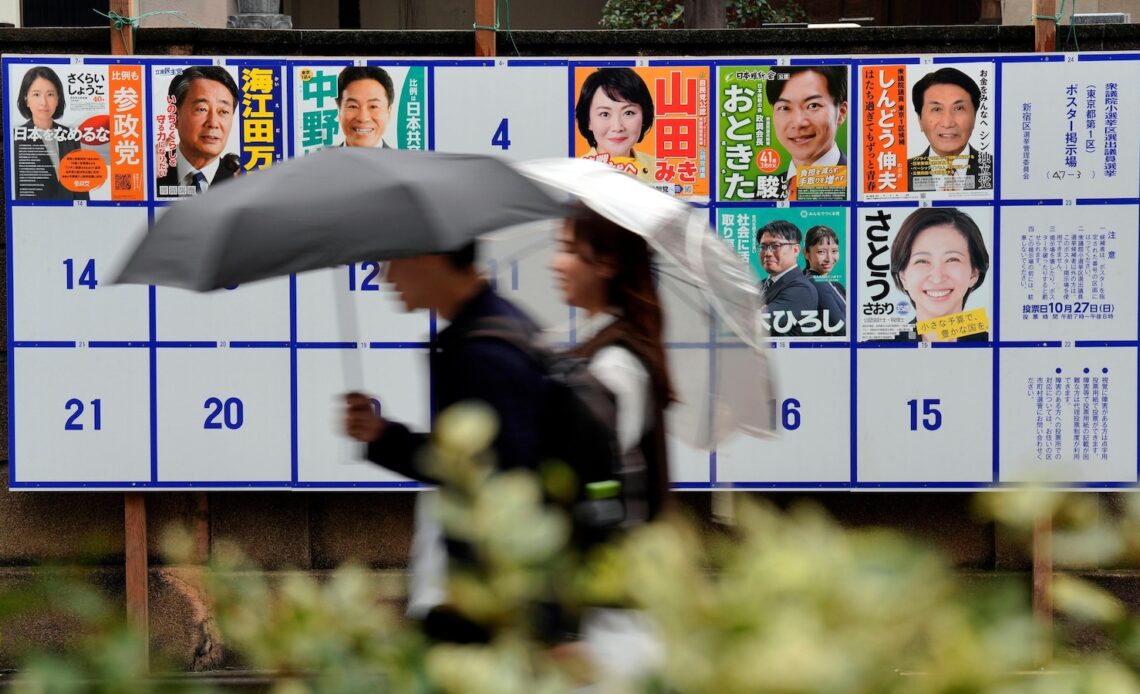TOKYO — TOKYO (AP) — Japanese Prime Minister Shigeru Ishiba ’s ruling party, dogged by corruption scandals and plunging support, faces its toughest challenge in more than a decade in Sunday’s parliamentary election.
This could set up a very short-lived time in office for Ishiba, who only took power earlier this month. But even if he may have to take responsibility and step down as head of the party and prime minister, it won’t cause his Liberal Democratic Party to fall from power. That’s because the party, which has had a stranglehold on power since 1955, easily dominates a fractured, weak opposition, which has only ruled twice, and briefly, during that time.
Analysts expect the opposition Constitutional Democratic Party of Japan to significantly gain ground, but not enough to change the government.
“I plan to vote, but the opposition won’t be my choice,” said Kanako Ojima, 48. “I don’t think I want to let the opposition take the helm again. … I think after all it is the LDP that has a long-term vision.”
The LDP has built its juggernaut of support through a network of bureaucrats, businesses and regional leaders. While opposition parties have made inroads in cities, the LDP controls the countryside, funneling huge government subsidies to rural areas.
Ishiba ordered Sunday’s election on the day he took office, on Oct. 1, aiming to use his image as a reformer to shake off voter anger and shore up power. Analysts say the LDP is likely to lose a few dozen seats and may fail to reach the target Ishiba set for his ruling coalition.
Even in a worst-case scenario, however, the LDP will still be the No. 1 party in the ruling bloc.
Here’s a look at how the LDP has dominated postwar Japanese politics and what virtual single-party rule means for Japan.
The LDP was formed in 1955 by the merger of two major conservative parties: the Liberal Party and the Japan Democratic Party, just as leftwing groups formed the Socialist Party. They led Japan after the war, when conservatives in the U.S.-occupied country were looking to deter the spread of communism.
The party’s rule was only interrupted twice, from 1993-1994 and 2009-2012, both times following bribery scandals. Many credit the LDP with leading Japan’s astonishing recovery after the war, when the nation became one of the world’s biggest economies through the 1980s.
People became used to the LDP dominating the smaller and the main opposition Socialist Party, whose initial ambition to take power…
Click Here to Read the Full Original Article at ABC News: International…

